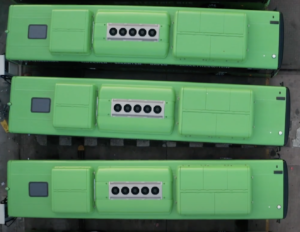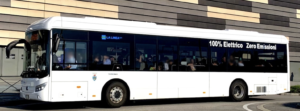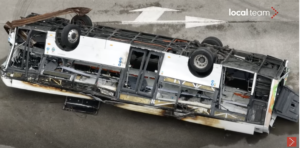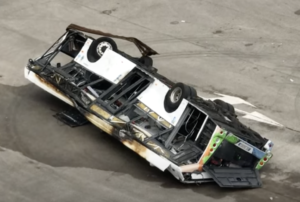The Mestre disaster and the keyboard lions

There are so many engineers, physicists and experts online that it almost bothers me to say my opinion on the subject because in the end I could be considered in the same way as the many know-it-alls, but I can't keep quiet when I see even people with a lot of followings shooting random personal sensations and opinions, passing them off as absolute truths, without having the slightest scientific basis or at least knowledge other than what is heard at the bar or on social media. We can't stand it anymore, starting with the politicians!
Having closed the premise/outburst, I try to make a reasoning based on the numbers and data available and verified so far, trying to clear the field of useless anti-electricity phobias regardless.
Let's start with the real problem: a bus with people on board fell from an overpass causing 21 victims and 15 injuries. And this should at least shut up those who want to exploit the matter for their no watt campaign. At least respect.
However, we know that:
- he touched the guardrail 27 times and ended his run at the point where it was interrupted after, it seems, the "beam" on which he ended up could not support the weight, contributing to his overturning.
- The cusp and a piece of the guardrail that was where it resumed after the hole slipped into the front right part of the bus, which suggests that it may have contributed to making the vehicle "turn" further to the right, putting it in the condition to fall.
- The right front wheel is clearly out of place; the cause could be of various nature, but it can be hypothesized that the collision with the final guardrail was "facilitated" by the collision with something (railing? Guardrail itself? It is not yet known).
- We also know, from the black box, that the speed at the start of the rollover was 6 km/h and that at the start of the impacts on the guardrail it was 36 km/h.
- From the images of the bus in quarantine (a mandatory procedure for every electric vehicle involved in an accident) there are no elements that confirm the rumor according to which "they continue to cool the batteries", also because no living soul is seen spraying the bus or the batteries, but simply some water (very little) on the square which could very well be the reflux of that used to put out the fire on the site. Even if they had continued to cool them, which is quite right, the quarantine procedure involves checking the temperature of the batteries with a thermal imager at regular intervals. If it doesn't rise or fall, there's nothing else you can do.
- The batteries, since we're talking about them, are with LFP chemistry, the chemistry considered safest against fires from drilling and against impacts given its stability. It is a chemical that is very difficult to ignite. Not impossible, but very difficult. Make up your own mind , promising
- Still observing the images of the quarantined bus from the drone, you can see the scorched roof, but you cannot see the typical effects of a fire from Thermal Runaway. The cause of the fire is still under investigation by investigators, so all the truths spread on social media are truths... from social media. What is certain is that the fire was put out quickly, that it did not char the vehicle, that there were burn injuries, and that an autopsy on the victims was not considered useful as the damage from crushing was so evident as to exclude any other cause. The mayor of Venice also said that the victims were not charred. I quote from the Venetian courier, “The prosecutor's office yesterday morning gave the clearance to return the bodies of the victims to their families. "Everyone has been identified, we considered that there is no doubt that the death was a direct cause of the accident and therefore from a criminal point of view there is no need to carry out autopsies", added the magistrate. The hypothesis of a fire in the lithium batteries, given that the vehicle was electric, remains in the background, even though the mayor of Venice Luigi Brugnaro himself stated that the bodies removed from the bus were not charred. “
Let's ignore all the chorus of those who blame anyone just to talk. The established facts, reported above, suggest an accident, in the true sense of the word, in which physics had its important part and which could have happened by any means, fueled in any way, for any reason you want.
But let's try to think about this.
All buses like the one that crashed are approved for a total fully loaded weight of 19,5 tons. So batteries or charcoal the road and the structures must be suitable for those weights. The batteries, indicated as the cause of the greater weight and therefore as the cause of the overturning, did not lead to more catastrophic consequences than what could happen with a traditional vehicle of the same weight.
And yes, the weight on the roof is not the greatest, but the bus approval standard, although old and designed for traditional combustion vehicles, requires the vehicle ALSO to pass a rollover test. Now, if a traditional vehicle is considered safer due to its lower center of gravity, and the law leads to test rollovers of such vehicles, how would a bus with batteries on the roof, indicated as a traveling hazard, pass the test given that should it tip over much sooner according to the theories of those who dispute this? Then we can discuss whether they could change the rule and make it more restrictive. I agree. But at present the electric buses approved for the European market respect this standard and the gauge and mass limits of all the others.
I remember that buses with three or more axles also pass on that road, when no articulated vehicles pass, and their weight is decidedly higher than the 19,5 tons we are talking about.
If anything in this accident, we can say that the LFP batteries withstood an impact of this type more than well.
Let's try to understand what we are talking about with numbers.
I am not a physicist, and I did the calculations by rounding the decimals for convenience, but a vehicle weighing 13000 kg (indicative empty weight, which in reality was certainly higher given the passengers on board calculated, by law, at 68 kg each) which falls from 15 meters leads to these calculations.
Suppose the rollover began at zero speed. In reality it seems to be 6 km/h but it is difficult to establish with the data currently public.
So we have 15 meters of height, an acceleration of gravity equal to 9,81 m/s2 and a calculated time to fall from that height of 1,75 seconds.
With these data it appears that the speed with which it impacted the roof was equal to 17,17 m/s or 61,8 km/h. As if he had crashed into the wall at 61,8 km/h.
With these data, giving the deceleration as 0,1 m/s2 given that the non-elasticity of the road below is assumed, the impact force is equal to 227.765 kg. That is, the 13-ton bus fell with a force comparable to 227,765 tons. That is, the batteries on the roof withstood an impact of 227,765 tons without exploding. At the moment I am not able to calculate whether or not a methane or hydrogen cylinder subjected to such crushing could have had some problem, but I believe it is highly probable that so.
Returning to the numbers: if we consider the legal 68 kg of a person, with the same data the impact is equal to 1190 kg. That is, the bodies of those present, net of elastic impacts or against something that cushioned the blow, are as if they had received blows with a force equal to 1190 kg. 1,19 tons.
The habit is often not to wear seat belts on buses, even if they are present, so imagine these poor bodies, weighing 1190 kg each, moving freely during those interminable 1,75 seconds.
I may have made some rounding mistakes, but the substance doesn't change. The causes of this tragedy lie in the numbers that would not change on pedal or coal powered buses.
A few words then about the fire on this bus.
Let's start with how this vehicle is built and I'll give you some images extrapolated from official videos of the manufacturer and one from the website of the company that owns the vehicle involved.



The batteries are positioned in those "rectangles" that are in front and behind the fans that can be seen, as well as being in the rear and rear side area.
Let's see some frames of the bus in quarantine now taken from the local team videos:


What I can assume from the photos is that meanwhile behind and to the side, where you can clearly see that the batteries have been removed, as stated by the Fire Brigade, there are no signs of fire, hence the flames that someone says they saw from the back of the bus before the epilogue it is unlikely that they are due to traction, at least not to the side and rear batteries. If they had been the ones on the roof they would have been clearly seen in the few frames available. However, the rear does not appear to be affected by fires that developed in the battery compartments.
For the burnt part of the roof, however, it is not very clear but the central part seems more "cooked", that is, where the fans are in the images above to understand.
A fire could also have started from where the two battery packs face the centre, towards the fans, but in any case the fire did not enter the interior which can clearly be seen, it did not suffer any significant damage and it does not appear to have been a fire by thermal runaway . However, we await the prosecutor's conclusions.
Finally, for pure culture, look at what the manufacturer declares regarding safety. Free not to believe it, for goodness sake, but it reflects what many European manufacturers do in similar scenarios so I don't feel like calling it a conspiracy.
Yutong battery fire simulation
Net of mechanical problems, illnesses, infrastructures, and respected regulations, where is the aggravating factor of the type of traction? As well as in absolute prevention regardless or in the desire to divert the focus of the problem elsewhere?
There was a fire, which also caused burns. Nobody denies it. But it certainly wasn't the battery fire that everyone fears, because a thermal runaway doesn't stop in a short time, and the quarantined bus, if that were the case, would probably have already burned down again. Just as it would have burned much more than the bus shows.
What caught fire? We await the conclusions of the investigations. But it could trivially, given that it often causes fires, especially in thermal vehicles, to have been the 24 V system present on all heavy vehicles, thermal and electric, which runs on the roof to power some services, for example. But even if there were some battery cells, which after an impact with these numbers could also be there, from what is currently available we can say that their safety is high, given that they were turned off in a short time and that, safety procedure mandatory aside, they did not go into thermal runaway.
Simply put, the mirrors to climb onto to blame traction instead of focusing on numbers and facts to reflect on are slippery and jarring.
Then maybe I'm wrong, and if so I'll already make a public amends, but I'd like to be wrong by being proven wrong by reliable numbers and facts, not by graduates in all things at the bar.
“Progress is impossible without change and he who cannot change his mind cannot change anything” George Bernard Shaw
bus numbers, electric buses, car's battery performance, EV, Eve Academy, mestre
